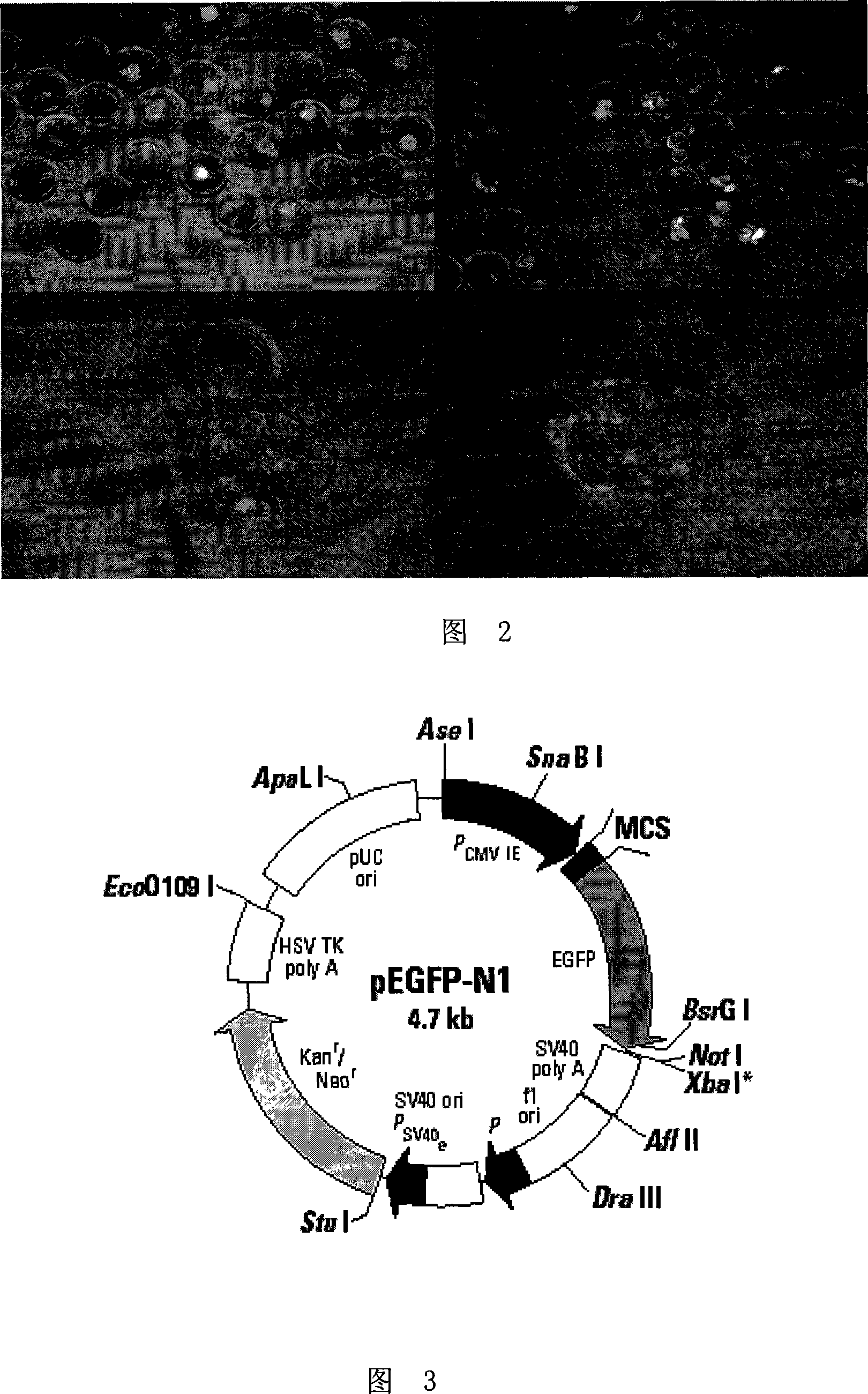Method for cloning animal somatic cell
A technology of somatic cell cloning and cloning method, which is applied in the field of animal somatic cell cloning, can solve problems such as polyhydramnios or giant fetus, fetal development delay, fetal death, etc., reduce miscarriage rate and dystocia rate, increase pregnancy rate, improve quality effect
- Summary
- Abstract
- Description
- Claims
- Application Information
AI Technical Summary
Problems solved by technology
Method used
Image
Examples
Embodiment 1
[0016] Example 1. Cloned cattle
[0017] 1. Donor - preparation of tetraploid blastomeres (4n)
[0018] 1.1 In vitro maturation of oocytes
[0019] The slaughterhouse collects the ovaries of adult cattle and puts them in 30°C normal saline and sends them to the laboratory within 4 hours. Wash the ovaries three times in 37°C PBS solution and put them in a container. Select follicles with a diameter of 4-8mm Use a 18-gauge needle of a 10ml syringe to draw follicular fluid, classify the recovered oocytes, select a type A cumulus oocyte complex with more than three layers of dense cumulus, and wash 3 times with maturation solution (maturation solution is M199+ 10% FBS+0.01U / mLbFSH+0.01U / mLbLH+1μg / mL estradiol), then put 30-40 pieces / drop of cumulus oocyte complex into the mature liquid drop, at 38.5℃ in 5% CO 2 Cultivate and mature in the incubator for 22hrs.
[0020] 1.2 Thawing of frozen semen and capacitation in vitro
[0021] Thaw the frozen semen of Holstein cattle from t...
Embodiment 2
[0048] Example 2. Blastomeres from tetraploid in vitro fertilization (IVF) are put into cloned embryos at the 8-16 cell stage to develop into trophoblast cells
[0049] To illustrate this process, the cloned blastomeres with enhanced green fluorescent protein (EGFP) were used as the marker signal to replace the ordinary IVF blastomeres. The specific operation is as follows, as shown in Figure 2:
[0050] The plasmid pEGEP-N1 (GibcoBRL company, catalog number: 6085-1) containing the EGFP gene was transferred into the fibroblast cell line prepared from Holstein cows according to step 2.1 of Example 1, and used as the donor cell line according to Example 1. Steps 2.1-2.5 were activated and divided to the 2-cell stage, and then obtained tetraploid blastomeres (4n) according to step 1.4 of Example 1, and cultivated to the 8-cells stage. The 8-cells stage tetraploid blastomeres (4n) transfected with EGFP gene were transferred into the 8-cell stage cloned embryos prepared according t...
PUM
| Property | Measurement | Unit |
|---|---|---|
| diameter | aaaaa | aaaaa |
Abstract
Description
Claims
Application Information
 Login to View More
Login to View More - R&D
- Intellectual Property
- Life Sciences
- Materials
- Tech Scout
- Unparalleled Data Quality
- Higher Quality Content
- 60% Fewer Hallucinations
Browse by: Latest US Patents, China's latest patents, Technical Efficacy Thesaurus, Application Domain, Technology Topic, Popular Technical Reports.
© 2025 PatSnap. All rights reserved.Legal|Privacy policy|Modern Slavery Act Transparency Statement|Sitemap|About US| Contact US: help@patsnap.com


